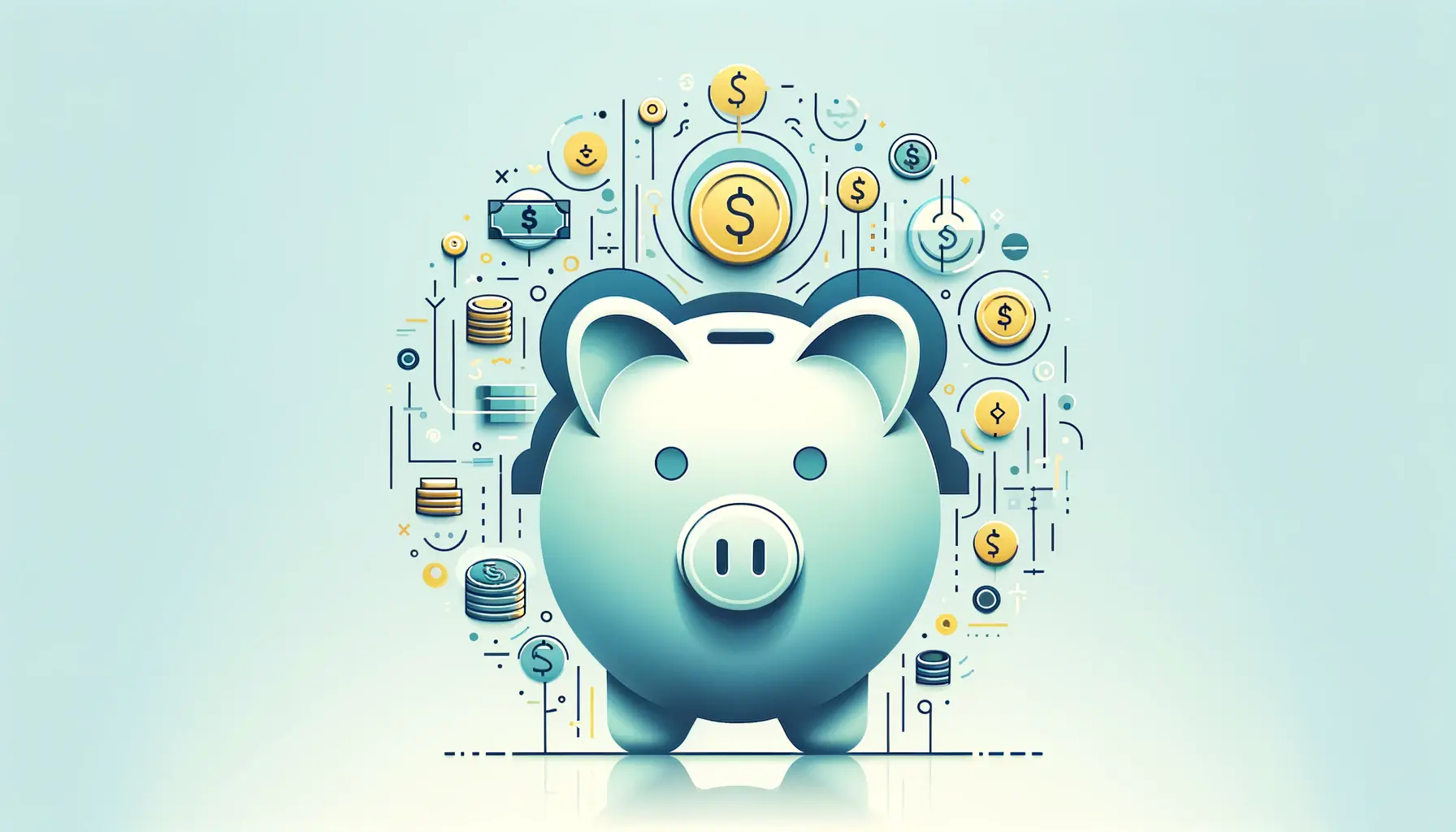As the digital landscape continues to evolve, the introduction of ChatGPT 4 marks a significant milestone in the realm of artificial intelligence.
This latest iteration of OpenAI’s groundbreaking language model has sparked widespread interest, not only for its enhanced capabilities but also for its pricing structure.
Understanding the cost associated with accessing this advanced AI tool is crucial for businesses, developers, and enthusiasts alike, aiming to leverage its potential to drive innovation and efficiency.
The anticipation surrounding ChatGPT 4 revolves around its promise to deliver more nuanced and sophisticated interactions than its predecessors.
With advancements in natural language processing and machine learning, ChatGPT 4 is poised to redefine the boundaries of AI-assisted communication, making the pricing aspect an essential consideration for prospective users.
This article aims to shed light on what to expect in terms of ChatGPT 4 pricing, ensuring that individuals and organizations can make informed decisions about incorporating this technology into their operations.
- Understanding ChatGPT 4 Pricing Models
- Factors Influencing ChatGPT 4 Pricing
- Maximizing Value with ChatGPT 4
- ChatGPT 4 for Different Industries
- Integrating ChatGPT 4 into Business Operations
- Challenges and Solutions in Adopting ChatGPT 4
- Future Trends in AI Pricing Models
- Embracing the Future with ChatGPT 4 Pricing
- ChatGPT 4 Pricing FAQs
Understanding ChatGPT 4 Pricing Models
The pricing model of ChatGPT 4 is a topic of keen interest for many, as it directly impacts the accessibility and affordability of the technology.
OpenAI has historically adopted a tiered pricing strategy for its products, and ChatGPT 4 is no exception.
This approach allows users to select a pricing plan that best suits their needs, balancing cost with computational power and access to premium features.
At the core of ChatGPT 4’s pricing structure is the distinction between personal and enterprise use.
Personal users, such as individual developers or small teams, can expect a pricing model that accommodates limited budgets while still offering access to the powerful capabilities of ChatGPT 4.
On the other hand, enterprise clients, which include larger organizations and businesses, may opt for more comprehensive plans that provide enhanced support, scalability, and customization options.
Subscription-Based Access
One of the primary ways users can access ChatGPT 4 is through a subscription-based model.
This model offers a predictable monthly or annual fee, granting users continuous access to the AI tool.
Subscription plans are typically tiered, with each level offering a different set of features, usage limits, and support options.
For individuals and small teams, a basic subscription may suffice, providing access to standard ChatGPT 4 functionalities with a reasonable monthly token allowance.
For businesses and organizations with more demanding requirements, premium subscriptions are available.
These plans often include higher token limits, priority support, and access to advanced features such as custom model training and integration capabilities.
The flexibility of subscription-based access ensures that ChatGPT 4 can cater to a wide range of use cases, from simple conversational bots to complex data analysis tasks.
Choosing the right subscription plan for ChatGPT 4 involves considering your specific needs, including the volume of interactions, the complexity of tasks, and the level of support required.
Pay-As-You-Go Options
For users with variable usage patterns or those looking to experiment with ChatGPT 4 without committing to a subscription, pay-as-you-go options provide a flexible alternative.
This model allows users to pay for what they use, with charges based on the number of tokens consumed.
Pay-as-you-go pricing is particularly appealing for project-based work or intermittent use, where monthly usage can fluctuate significantly.
This model’s advantage lies in its scalability, enabling users to ramp up or down their usage based on current needs.
It also allows for cost-effective experimentation, as users can test ChatGPT 4’s capabilities on a small scale before deciding on a more substantial investment.
However, for those with consistent high-volume needs, a subscription plan may offer better value in the long run.
Factors Influencing ChatGPT 4 Pricing
The cost of accessing ChatGPT 4 is not a one-size-fits-all figure.
Several factors can influence the final price paid by users, making it essential to understand these variables when budgeting for ChatGPT 4 usage.
From computational resources to the type of tasks performed, each aspect plays a crucial role in determining the overall cost.
Computational Resources
The complexity and size of the tasks performed using ChatGPT 4 directly impact the computational resources required, which in turn affects pricing.
Larger, more complex queries require more processing power and, consequently, incur higher costs.
Users should consider the nature of their tasks when estimating ChatGPT 4 expenses.
- Token Usage: The number of tokens used in queries and responses is a primary cost driver. More extensive interactions consume more tokens, leading to higher charges.
- Model Selection: ChatGPT 4 offers different model sizes tailored to various tasks. Opting for a more powerful model for complex data processing tasks can increase costs.
Access Frequency
How often users access ChatGPT 4 also plays a significant role in pricing.
Regular use over extended periods can quickly accumulate costs, especially for businesses relying on ChatGPT 4 for daily operations.
- Peak vs. Off-Peak Usage: Accessing ChatGPT 4 during peak hours may result in higher costs due to increased demand for computational resources.
- Batch Processing: Users can optimize costs by batching tasks and processing them during off-peak hours, if possible.
Subscription Level
The chosen subscription level significantly influences the overall cost of using ChatGPT 4.
Each tier offers different features, token allowances, and support levels, tailored to various user needs.
- Basic vs. Premium: Basic plans are more cost-effective but offer limited features and lower token limits, while premium plans provide extensive access and higher token allowances.
- Custom Plans: For enterprise users, custom plans can be negotiated to fit specific requirements, potentially offering better value for large-scale deployments.
Considering these factors and planning accordingly can help users optimize their ChatGPT 4 usage and manage costs effectively.
Additional Features and Services
Beyond the core functionality of ChatGPT 4, additional features and services can also affect pricing.
These enhancements, while optional, can provide significant value to users seeking to maximize the capabilities of ChatGPT 4.
- Custom Model Training: Training custom models to suit specific needs or industries can incur additional costs, depending on the complexity and data requirements.
- Integration Support: Assistance with integrating ChatGPT 4 into existing systems or developing new applications may require premium support services.
Maximizing Value with ChatGPT 4
Investing in ChatGPT 4 involves more than just understanding its pricing structure; it’s about leveraging the technology to its fullest potential to ensure a return on investment.
Whether you’re a developer, a business owner, or an AI enthusiast, there are strategies to maximize the value you get from ChatGPT 4 while keeping costs in check.
Identify Specific Use Cases
One of the first steps to maximizing value is to clearly define how ChatGPT 4 will be used within your operations.
Identifying specific use cases not only helps in selecting the appropriate pricing plan but also in streamlining processes to reduce unnecessary usage.
- Customer Service Automation: Deploying ChatGPT 4 to handle routine customer inquiries can improve response times and customer satisfaction while reducing the workload on human staff.
- Content Creation: Utilizing ChatGPT 4 for generating articles, reports, or marketing copy can significantly speed up the content creation process and enhance creativity.
Optimize Token Usage
Since token usage directly impacts costs, optimizing the way tokens are consumed can lead to significant savings.
This involves refining prompts to be more concise and avoiding redundant interactions.
- Refine Prompts: Develop prompts that are clear and direct to minimize the number of tokens required for each interaction.
- Avoid Redundancy: Structure conversations to avoid asking for information that has already been provided, reducing the total token count.
Leverage Batch Processing
For tasks that aren’t time-sensitive, batch processing can be an effective way to manage costs.
By accumulating tasks and processing them during off-peak hours, you can take advantage of lower rates and reduced competition for computational resources.
- Scheduling: Plan to run non-urgent tasks during times when demand for ChatGPT 4 resources is lower.
- Aggregation: Combine multiple tasks into a single request where possible to minimize the number of separate interactions.
Proper planning and optimization strategies are key to maximizing the benefits of ChatGPT 4 while maintaining cost efficiency.
Continuous Monitoring and Adjustment
Staying on top of your ChatGPT 4 usage and costs is crucial for ensuring that you’re getting the most value out of the service.
Regularly review your usage patterns, adjust your strategies as needed, and keep an eye out for new features or pricing plans that could offer additional benefits.
- Usage Analytics: Utilize tools and dashboards provided by OpenAI to monitor your ChatGPT 4 usage and identify areas for optimization.
- Feedback Loops: Implement feedback mechanisms to gather insights from users and adjust your ChatGPT 4 deployment accordingly.
ChatGPT 4 for Different Industries
The versatility of ChatGPT 4 extends across various industries, offering unique benefits tailored to each sector’s specific needs.
From enhancing customer service to driving research and development, ChatGPT 4’s advanced AI capabilities can be a game-changer for businesses looking to innovate and improve efficiency.
Healthcare
In the healthcare industry, ChatGPT 4 can revolutionize patient care and administrative efficiency.
By integrating ChatGPT 4 into patient management systems, healthcare providers can offer personalized advice, automate appointment scheduling, and streamline patient inquiries, all while maintaining privacy and compliance with healthcare regulations.
- Personalized Patient Interaction: ChatGPT 4 can analyze patient data to provide tailored health advice, follow-up reminders, and medication instructions, enhancing patient engagement and care.
- Administrative Automation: Automating administrative tasks such as appointment scheduling and patient inquiries can significantly reduce the workload on healthcare staff, allowing them to focus on patient care.
Education
The education sector can benefit immensely from ChatGPT 4 by personalizing learning experiences and providing scalable tutoring solutions.
ChatGPT 4 can assist in creating dynamic learning materials, offering instant feedback on assignments, and facilitating interactive learning sessions that adapt to each student’s pace and learning style.
- Customized Learning Materials: Teachers can use ChatGPT 4 to generate customized study guides, quizzes, and educational content that aligns with their curriculum and students’ learning needs.
- Interactive Tutoring: ChatGPT 4 can serve as a 24/7 tutor, providing students with explanations, practice problems, and feedback in real-time, making learning more accessible and engaging.
Finance
In the finance industry, ChatGPT 4 can enhance customer service, automate routine inquiries, and provide personalized financial advice.
By integrating ChatGPT 4 into financial platforms, banks and financial institutions can offer a more responsive and personalized customer experience.
- Automated Customer Support: ChatGPT 4 can handle a wide range of customer inquiries, from account balance queries to transaction disputes, reducing wait times and improving customer satisfaction.
- Personalized Financial Advice: Leveraging data analysis capabilities, ChatGPT 4 can offer tailored financial advice, helping customers make informed decisions about savings, investments, and budgeting.
The implementation of ChatGPT 4 across different industries not only streamlines operations but also opens up new avenues for innovation and customer engagement.
Retail
The retail sector can leverage ChatGPT 4 to enhance the shopping experience, provide personalized recommendations, and manage inventory more efficiently.
By integrating ChatGPT 4 into e-commerce platforms and customer service channels, retailers can offer a more engaging and efficient shopping experience.
- Personalized Shopping Assistance: ChatGPT 4 can act as a personal shopping assistant, offering product recommendations based on customer preferences and browsing history.
- Inventory Management: Retailers can use ChatGPT 4 to automate inventory queries, track stock levels, and predict restocking needs, ensuring that popular items are always available.
Integrating ChatGPT 4 into Business Operations
The integration of ChatGPT 4 into business operations marks a significant leap towards digital transformation.
By harnessing the power of advanced AI, businesses can automate complex processes, enhance decision-making, and deliver personalized customer experiences.
The key to successful integration lies in strategic planning and leveraging ChatGPT 4’s capabilities to meet specific business objectives.
Streamlining Customer Service
Customer service stands as one of the primary areas where ChatGPT 4 can make a substantial impact.
By automating responses to common inquiries, businesses can ensure timely and accurate support, thereby increasing customer satisfaction and loyalty.
- Automated Responses: Implementing ChatGPT 4 to handle FAQs and routine customer queries can free up human agents to tackle more complex issues, improving overall service efficiency.
- 24/7 Support: With ChatGPT 4, businesses can offer round-the-clock customer service, ensuring that customers receive immediate assistance anytime, enhancing the customer experience.
Enhancing Content Creation
Content creation, a vital component of digital marketing strategies, can be significantly optimized with ChatGPT 4.
From drafting engaging blog posts to creating compelling marketing copy, ChatGPT 4 can assist in producing high-quality content at scale.
- Blog Posts and Articles: ChatGPT 4 can help generate informative and engaging articles, helping businesses maintain an active online presence and attract more traffic to their sites.
- Marketing Copy: Leveraging ChatGPT 4 for creating ad copy, product descriptions, and email campaigns can enhance the effectiveness of marketing efforts with less time and resource investment.
Optimizing Operations and Workflow
Operational efficiency is crucial for the success of any business.
ChatGPT 4 can automate and optimize various operational tasks, from scheduling to reporting, thereby streamlining workflows and reducing manual errors.
- Automated Scheduling: ChatGPT 4 can manage scheduling tasks, such as meetings and appointments, ensuring efficient time management and coordination.
- Data Analysis and Reporting: Businesses can utilize ChatGPT 4 to analyze data and generate reports, providing insights that support informed decision-making and strategy development.
The strategic integration of ChatGPT 4 into business operations not only enhances efficiency but also fosters innovation, setting the stage for sustained growth and competitiveness in the digital era.
Facilitating Research and Development
Research and development (R&D) are pivotal for innovation and staying ahead in the market.
ChatGPT 4 can accelerate R&D processes by providing quick access to information, generating ideas, and simulating outcomes.
- Accelerating Research: ChatGPT 4 can quickly sift through vast amounts of data, summarizing research findings and identifying trends, thereby speeding up the research phase.
- Simulating Scenarios: By simulating different scenarios, ChatGPT 4 can help R&D teams evaluate the potential outcomes of their innovations, aiding in the development of more effective products and solutions.
Challenges and Solutions in Adopting ChatGPT 4
While the adoption of ChatGPT 4 presents numerous opportunities for businesses and individuals alike, it is not without its challenges.
Understanding these hurdles and identifying effective solutions is crucial for maximizing the benefits of this advanced AI technology.
Data Privacy and Security
One of the paramount concerns surrounding the use of ChatGPT 4 involves data privacy and security.
As businesses integrate ChatGPT 4 into their operations, ensuring the protection of sensitive information becomes imperative.
- Challenge: Safeguarding customer and business data while utilizing ChatGPT 4 for various tasks.
- Solution: Implementing robust encryption methods and adhering to strict data handling policies can mitigate risks, ensuring compliance with data protection regulations.
Integration Complexity
Integrating ChatGPT 4 into existing systems and workflows can be complex, requiring technical expertise and resources.
- Challenge: Seamlessly integrating ChatGPT 4 into diverse technological environments without disrupting current operations.
- Solution: Leveraging professional services and support offered by OpenAI, or partnering with IT specialists, can ease the integration process, ensuring smooth adoption.
Cost Management
Effectively managing the costs associated with ChatGPT 4 usage is crucial for businesses to ensure a positive return on investment.
- Challenge: Balancing the benefits of ChatGPT 4 with its associated costs, especially for small businesses or startups with limited budgets.
- Solution: Carefully selecting the appropriate pricing plan, optimizing token usage, and monitoring usage patterns can help manage expenses while still leveraging ChatGPT 4’s capabilities.
Assuming that ChatGPT 4 can only be used for customer service or content creation is a misconception. Its applications span across various industries and functions, offering broad utility and value.
Keeping Up with Rapid Technological Advances
The pace of technological advancement in AI and machine learning is rapid, presenting a challenge for users to stay updated and fully leverage ChatGPT 4’s capabilities.
- Challenge: Continuously adapting to new features, updates, and best practices related to ChatGPT 4 to maximize its potential.
- Solution: Engaging with the OpenAI community, participating in training sessions, and staying informed about the latest developments can help users keep pace with technological advancements.
Future Trends in AI Pricing Models
The landscape of artificial intelligence, particularly in the context of language models like ChatGPT 4, is rapidly evolving.
This evolution is not just limited to technological advancements but extends to the pricing models that govern access to these cutting-edge tools.
As AI becomes more integrated into various sectors, understanding the trajectory of future pricing models is crucial for businesses and developers looking to leverage AI technologies.
Dynamic Pricing Strategies
One significant trend is the shift towards more dynamic and usage-based pricing models.
These models offer flexibility and scalability, allowing users to pay based on the actual consumption of AI resources.
- Adaptability: Dynamic pricing models can adjust to the changing needs of users, providing cost-effective solutions for both sporadic and heavy users of AI technologies.
- Accessibility: By aligning costs more closely with usage, dynamic pricing can make advanced AI tools like ChatGPT 4 more accessible to a broader range of users, from individual developers to large enterprises.
Subscription Models with Tiered Features
Subscription models, particularly those offering tiered features, are becoming increasingly popular.
These models provide users with the flexibility to choose a plan that best fits their needs and budget.
- Variety of Options: With tiered subscriptions, users can select from a range of plans offering varying levels of access, features, and support, ensuring they only pay for what they need.
- Consistent Updates: Subscription models often include regular updates and improvements, ensuring users always have access to the latest AI capabilities without additional costs.
Customizable and Negotiable Plans
As AI technologies continue to mature, we can expect to see more customizable and negotiable pricing plans, especially for enterprise users.
These plans can be tailored to fit specific use cases, volumes, and budgetary constraints.
- Personalization: Custom plans allow businesses to negotiate terms that align closely with their operational requirements and financial capabilities.
- Strategic Partnerships: Negotiable plans can foster stronger relationships between AI service providers and users, encouraging long-term collaborations and innovation.
The future of AI pricing models is likely to be characterized by increased flexibility, accessibility, and personalization, reflecting the diverse needs of users across different industries and applications.
Emphasis on Value-Based Pricing
Another emerging trend is the emphasis on value-based pricing, where the cost of AI services is directly related to the value they provide to users.
This approach encourages the development of AI solutions that deliver tangible benefits and ROI.
- Alignment with Business Objectives: Value-based pricing models ensure that the costs of AI tools are justified by their contributions to achieving business goals, such as increased efficiency, revenue growth, or enhanced customer satisfaction.
- Incentive for Innovation: By linking pricing to value, AI service providers are incentivized to continuously improve their offerings to deliver greater benefits to users.
Embracing the Future with ChatGPT 4 Pricing
The journey through the intricacies of ChatGPT 4 pricing reveals a landscape where flexibility, innovation, and strategic planning converge to offer diverse opportunities for users across the spectrum.
As we stand on the brink of a new era in artificial intelligence, understanding and leveraging the pricing models of ChatGPT 4 becomes pivotal for businesses, developers, and enthusiasts eager to harness the power of advanced AI.
The Strategic Edge of Informed Decisions
Making informed decisions about ChatGPT 4 pricing is not just about cost management; it’s about unlocking the strategic edge that AI can provide.
Whether it’s through optimizing operations, enhancing customer experiences, or driving innovation, the value derived from ChatGPT 4 extends far beyond its price tag.
The key lies in selecting the right pricing model that aligns with your specific needs and goals, ensuring that you can fully capitalize on the capabilities of ChatGPT 4 without overspending.
Future-Proofing with AI
The future of AI pricing models, particularly for groundbreaking technologies like ChatGPT 4, promises even greater flexibility and personalization.
This evolution will likely encourage wider adoption, as more users find the pricing models that fit their unique requirements.
By staying informed about these trends and adapting to the changing landscape, users can future-proof their operations, ensuring that they remain competitive and innovative in an increasingly AI-driven world.
- Dynamic pricing strategies will cater to varying usage patterns, offering cost-effective solutions for both small-scale and enterprise-level users.
- Subscription models with tiered features will provide the flexibility to choose plans based on specific needs and budget constraints, ensuring access to the latest AI advancements.
- Customizable and negotiable plans will allow for personalized solutions, fostering strategic partnerships between AI providers and users.
- Value-based pricing will align the cost of AI tools with the tangible benefits they provide, incentivizing continuous improvement and innovation.
In conclusion, as ChatGPT 4 continues to redefine the boundaries of what’s possible with AI, understanding and navigating its pricing models is essential.
By making strategic choices today, users can unlock the full potential of ChatGPT 4, driving growth, innovation, and efficiency in their operations.
The future of AI is not just about technology; it’s about the strategic integration of these tools into our lives and work, powered by pricing models that enable access, innovation, and value for all.
ChatGPT 4 Pricing FAQs
Discover essential insights into ChatGPT 4’s pricing with our curated FAQ section, designed to address your most pressing queries.
The ChatGPT Plus subscription, offering access to GPT-4, is priced at $20 per month.
No, ChatGPT 4 does not have a free version; access is provided through ChatGPT Plus or API usage, subject to fees.
ChatGPT 4, with advanced features, follows a similar pricing model to GPT-3.5 but offers enhanced capabilities for the cost.
Yes, pricing varies between personal use, typically through ChatGPT Plus, and enterprise solutions, which may offer custom pricing.
OpenAI occasionally offers discounts or special pricing for educational institutions, subject to their policies.
Beyond the subscription, consider costs related to increased API usage, custom model training, and potential integration services.
Optimize token usage, select the appropriate subscription level, and monitor usage patterns to manage expenses effectively.
Yes, ChatGPT 4 offers pay-as-you-go pricing for API usage, allowing for flexible cost management based on actual use.











